Resources

Click Here for Book Review Abstract: Rethinking Knowledge within Higher Education argues for a higher education that is neither a romantic idyll of learning for its own sake nor an instrumental institution designed to train a willing workforce for the prevailing economic system. Instead, using analysis informed by critical theorist Theodor Adorno, this book argues that higher education should have social and economic roles at its heart, and that these should encompass the needs of all society. The key to achieving this purpose without privilege lies in the ways in which knowledge is understood and engaged with in higher education. Higher education has a special role in society as a place in which complex, contested and dynamic knowledge is engaged with, challenged and created. The realization of this purpose challenges traditional dichotomies between economic and social purposes, liberal and vocational education, and theory and practice. Jan McArthur shows that by interpreting and adapting some of Adorno's most complex ideas, the nature of knowledge and the pursuit of social justice within higher education is feasible and aspirational. (From the Publisher)
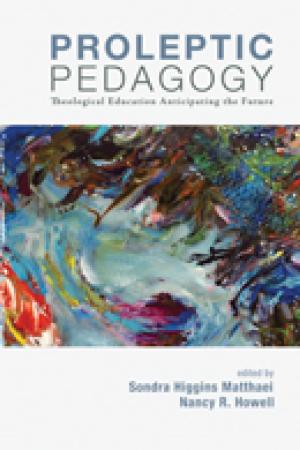
Click Here for Book Review Abstract: Could we have imagined how much theological education would change in the new millennium? Shifting needs of students, classrooms, and churches have demanded constant revisions of the curriculum, course design, classroom technology, and pedagogical strategies. Saint Paul School of Theology felt the tide of change within our own walls and designed a project called "Proleptic Pedagogy" to address three distinct pedagogical challenges for the future of theological education. First, instead of fitting new technologies into old pedagogies, how are teaching and learning transformed by shifting needs of students who are "digital natives," "digital immigrants," or distance learners? Second, instead of reactive strategies, what pedagogy proactively eliminates "accommodations" because courses are designed with flexibility and openness to diverse learning styles, disabilities, and needs? Third, instead of engaging student diversity with the tools of the 1960s, what new teaching and learning strategies anticipate future student racial and ethnic demographics and interracial educational experiences? This volume of essays narrates our classroom stories, teases out pedagogical issues, examines pedagogical literature, reflects on theology of pedagogy, and constructs pedagogical proposals—with an open invitation for other theological educators to join our conversation about the future of theological education. (From the Publisher)
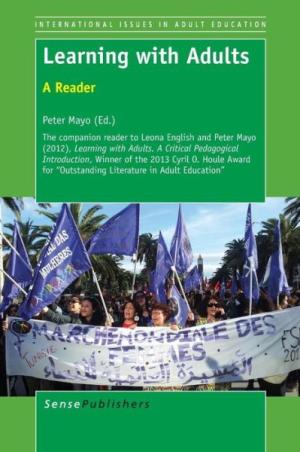
Click Here for Book Review Abstract: This anthology brings together some of the finest writers on different aspects of adult education and related areas to provide a complementary reader to the introductory text by Leona English and Peter Mayo Learning with Adults: A Critical Introduction. Areas tackled include Disability, Prisons, Third Age Universities, Lifelong Learning Policy, Learning Society, Poverty, LGBTQ, Sport, Women, Literacy, Transformative Learning, Community Arts, Aesthetics, Consumption, Migration, Libraries, Folk High Schools, Adult Education Policy, Subaltern Southern Social Movements, Social Creation, Community Radio, Social Film. Contexts focused on include Africa, Caribbean, Europe, Latin America, Asia (India), small island states. Over thirty authors involved including Zygmunt Bauman, Rosa Maria Torres, Oskar Negt, Antonia Darder, Jim Elmborg, D. W. Livingstone, Palle Rasmussen, Mae Shaw, Leona English, Asoke Bhattacharya, Cynthia L. Pemberton, Eileen Casey White, Daniel Schugurensky, Dip Kapoor, Peter Rule, John Myers, Joseph Giordmaina, Antonia De Vita, Alexis Kokkos, Marvin Formosa, Carmel Borg, Julia Preece, Patricia Cranton, Lyn Tett, Ali A. Abdi, Anna Maria Piussi, Behrang Foroughi, Taadi Ruth Modipa, Robert Hill, Edward Shiza, Kaela Jubas and Didacus Jules. (From the Publisher)

For many, the academy has historically represented privilege and intellectual exclusion; for others it has represented an increasingly contested site, as marginalized populations have challenged the myth of the ivory tower being a haven of meritocracy and equal opportunities. Still others persist in viewing universities as a level playing field, a place where people are judged primarily by their ideas and intellectual contributions. Ironically, alongside these charged conversations of exclusivity, privilege, and opportunity has occurred the seduction of the ivory tower by market interests, sacrificing standards in the interests of ill-defined efficiency. Much has been written on the increasingly market-driven culture of higher education; many have called this commodification and instrumentalization the most dangerous ideology of the current historical moment. Yet, within this landscape, there have been scholars willing to make space to critically interrogate higher education in relation to multiple systems of oppression. They are working to introduce new perspectives, nurturing counter-hegemonic knowledges. Many have struggled to cocreate and sustain democratic spheres that decenter dominant interests, with the aim of a more equitable society. They have been part of a larger movement of academic warriors, academics with consciences who live out their commitments by subscribing to the notion that scholarship and activism are inextricably intertwined. This volume embodies their narratives and issues an open invitation.‚Ä® This is 139th volume of this Jossey-Bass quarterly report series. Noted for its depth of coverage, it explores issues of common interest to instructors, administrators, counselors, and policymakers in a broad range of adult and continuing education settings, such as colleges and universities, extension programs, businesses, libraries, and museums. (From the Publisher)

Click Here for Book Review Abstract: Neoliberalism’s War on Higher Education reveals how neoliberal policies, practices, and modes of material and symbolic violence have radically reshaped the mission and practice of higher education, short-changing a generation of young people. Giroux exposes the corporate forces at play and charts a clear-minded and inspired course of action out of the shadows of market-driven education policy. Championing the youth around the globe who have dared to resist the bartering of their future, he calls upon public intellectuals—as well as all people concer ned about the future of democracy—to speak out and defend the university as a site of critical learning and democratic promise. (From the Publisher)
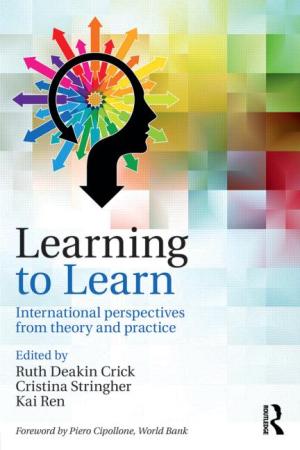
Click Here for Book Review Abstract: Learning to Learn provides a much needed overview and international guide to the field of learning to learn from a multidisciplinary lifelong and lifewide perspective. A wealth of research has been flourishing on this key educational goal in recent years. Internationally, it is considered to be one of the key competencies needed to compete in the global economy, but also a crucial factor for individual and social well-being. This book draws on leading international contributors to provide a cutting-edge overview of current thinking on learning to learn research, policy, and implementation in both formal and informal learning environments. But what learning to learn is exactly, and what its constituting elements are, are much debated issues. These seem to be the crucial questions if assessment and development of this 'malleable side of intelligence' are to be accomplished. The approach of this volume is to consider a broad conception of learning to learn, not confined to only study strategies or metacognition, yet acknowledging the importance of such elements. The book sets out to answer five main questions: • What is learning to learn? • What are its functions and how do we assess it? • What does it promise to the individual and society at large? • How is it conceived in national curricula internationally? • How can it be developed in a variety of contexts? The text is organized into two parts: the first addresses the core question of the nature of learning to learn from a theoretical and policy viewpoint, and the second presents recent research carried out in several educational systems, with special attention to assessment and curriculum. It gives an account of pedagogical practices of learning to learn and its role in individual empowerment from childhood to adulthood. Contributors also highlight the potential use of learning to learn as an organizing concept for lifelong learning, school improvement, and teacher training along with potential conflicts with existing incentive practices and policies. This book is a vital starting point and guide for any advanced student or researcher looking to understand this important area of research. (From the Publisher)
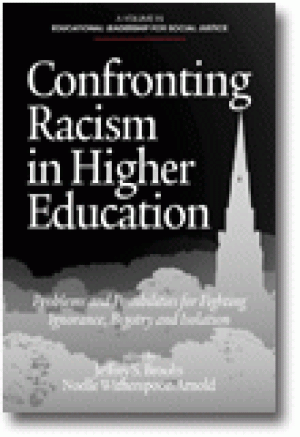
Racism and ignorance churn on college campuses as surely as they do in society at large. Over the past fifteen years there have been many discussions regarding racism and higher education. Some of these focus on formal policies and dynamics such as Affirmative Action or The Dream Act, while many more discussions are happening in classrooms, dorm rooms and in campus communities. Of course, corollary to these conversations, some of which are generative and some of which are degenerative, is a deafening silence around how individuals and institutions can actually understand, engage and change issues related to racism in higher education. This lack of dialogue and action speaks volumes about individuals and organizations, and suggests a complicit acceptance, tolerance or even support for institutional and individual racism. There is much work to be done if we are to improve the situation around race and race relation in institutions of higher education. There is still much work to be done in unpacking and addressing the educational realities of those who are economically, socially, and politically underserved and oppressed by implicit and overt racism. These realities manifest in ways such as lack of access to and within higher education, in equitable outcomes and in a disparity of the quality of education as a student matriculates through the system. While there are occasional diversity and inclusion efforts made in higher education, institutions still largely address them as quotas, and not as paradigmatic changes. This focus on “counting toward equity rather” than “creating a culture of equity” is basically a form of white privilege that allows administrators and policymakers to show incremental “progress” and avoid more substantive action toward real equity that changes the culture(s) of institutions with longstanding racial histories that marginalize some and privilege others. Issues in higher education are still raced from white perspectives and suffer from a view that race and racism occur in a vacuum. Some literature suggests that racism begins very early in the student experience and continues all the way to college (Berlak & Moyenda). This mis-education, mislabeling and mistreatment based on race often develops as early as five to ten years old and “follows” them to postgraduate education and beyond. (From the Publisher)
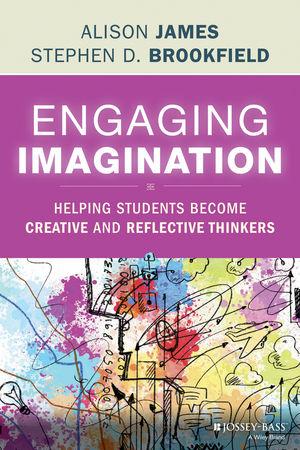
Click Here for Book Review Abstract: How to nurture creativity in tomorrow’s innovators—today’s college students When asked what they want colleges to emphasize most, employers didn’t put science, computing, math, or business management first. According to AAC&U’s 2013 employer survey, 95% of employers give hiring preference to college graduates with skills that will enable them to contribute to innovation in the workplace. In Engaging Imagination: Helping Students Become Creative and Reflective Thinkers, two leading educators help college instructors across disciplines engage students in nurturing creativity and innovation for success beyond the classroom. Alison James, an expert in creative arts education, and Stephen D. Brookfield, bestselling author, outline how creative exploration can extend students’ reflective capabilities in a purposeful way, help them understand their own potential and learning more clearly, and imbue students with the freedom to generate and explore new questions. This book: • shows why building creative skills pays dividends in the classroom and in students’ professional lives long after graduation; • offers research-based, classroom-tested approaches to cultivating creativity and innovation in the college setting; • provides practical tools for incorporating “play” into the college curriculum; • draws on recent advances in the corporate sector where creative approaches have been adopted to reinvigorate thinking and problem-solving processes; and • includes examples from a variety of disciplines and settings. Engaging Imagination is for college and university faculty who need to prepare students for the real challenges of tomorrow’s workplace. (From the Publisher)
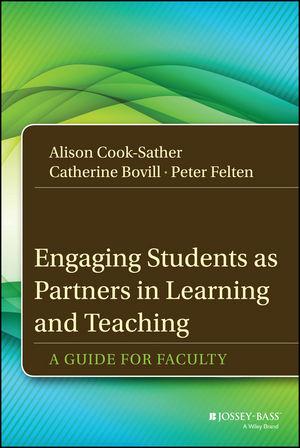
A guide to developing productive student-faculty partnerships in higher education Student-faculty partnerships is an innovation that is gaining traction on campuses across the country. There are few established models in this new endeavor, however. Engaging Students as Partners in Learning and Teaching: A Guide for Faculty offers administrators, faculty, and students both the theoretical grounding and practical guidelines needed to develop student-faculty partnerships that affirm and improve teaching and learning in higher education. • Provides theory and evidence to support new efforts in student-faculty partnerships • Describes various models for creating and supporting such partnerships • Helps faculty overcome some of the perceived barriers to student-faculty partnerships • Suggests a range of possible levels of partnership that might be appropriate in different circumstances • Includes helpful responses to a range of questions as well as advice from faculty, students, and administrators who have hands-on experience with partnership programs Balancing theory, step-by-step guidelines, expert advice, and practitioner experience, this book is a comprehensive why- and how-to handbook for developing a successful student-faculty partnership program. (From the Publisher)
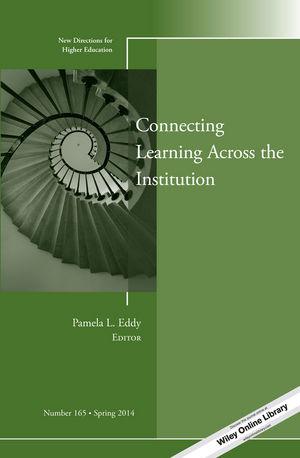
Click Here for Book Review Abstract: Most research on learning tends to occur in silos based on stakeholder perspective. This volume seeks to break down these silos and draw together scholars who research learning from different perspectives to highlight commonalities in learning for students, faculty, and institutions. When we understand how learning is experienced across the institution, we can develop strategies that help support, enhance, and reinforce learning for all. Exploring what it means to bridge learning across the institution, this volume provides a roadmap to improve learning for all. Both scholarly and practical, it advances the knowledge about the ways we investigate and study learning across and for various groups of learners. 

It also: • Collects thinking about learning in its various formats in one location • Provides a platform for synthesis • Outlines key questions for thinking more deeply about learning on campus. Instead of thinking of learning as discrete depending on the stakeholder group, this  volume highlights the commonalities across all types of learners. (From the Publisher)